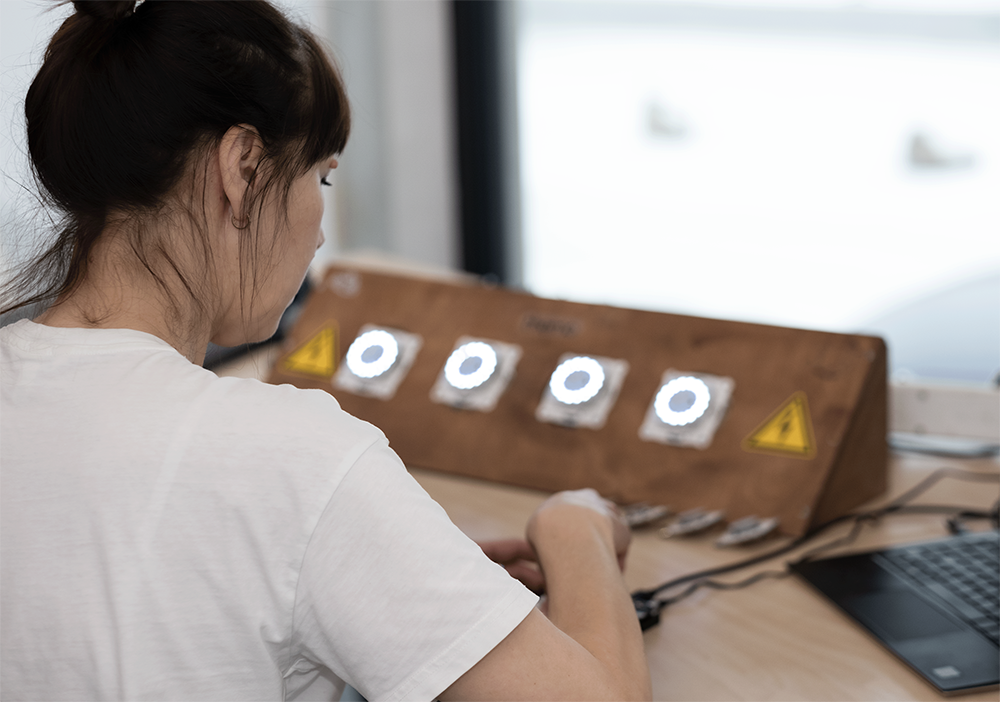What is Themo Cloud, and what’s the story behind it? We sat down with Priit Aarma – the man behind Themo Cloud – to hear how a student project became a global smart heating platform.
Nothing was holding them back in the beginning
Priit’s journey with Themo started back in 2015, during his thesis project at IT College. He approached Madis Uuemaa at a company then called Smart Load Solutions, and soon began an internship there.
“The first thing I built was the user interface -- in fact, in many ways the same system we still use today as an internal tool for device management,” laughs Priit Aarma, now Lead Cloud Developer at Themo.
The initial idea was to offer a service for heating device companies – a smart algorithm that could suggest when and how to heat optimally. Themo Cloud began as a smart recommendation engine.
“I remember Madis pitching me the idea of changing the world. At that point, building our own thermostat wasn’t even in the picture,” Priit recalls.
“But soon we realized that just offering a service platform wasn’t enough – no one took us seriously. So, we decided to build the thermostat ourselves from scratch. That time felt limitless. The world was open, and we were ready to do whatever it took to bring our idea to market.”

Themo Cloud – The Place Where the Magic Happens
Priit breaks the story of Themo Cloud into three parts:
Why we built it, how we built it, and the impact it’s had.
Why We Built It
At its core, Themo Cloud is a single, powerful service – essentially a virtual machine that handles all client requests globally.
“We built our own cloud because we needed scalability and high availability,” Priit explains. “From day one, we didn’t target just one country – we were thinking globally. We started in Estonia, then scaled to Finland, Norway, the Baltics… and we’ve kept scaling ever since.”
Themo Cloud ensures real-time data exchange between thermostats in different regions.
“Unlike a single service, where everything breaks if one part fails, cloud services keep running. That means users still get optimized heating – even if something goes wrong in one component. That reliability was the core reason for building Themo Cloud,” says Priit.
How We Built It
Themo Cloud was built following agile development principles and microservice architecture.
“We broke everything down into small, independent services – microservices. Each one handles a specific task,” Priit says.
The pipeline includes everything from electricity pricing and heating schedules to user comfort and energy limits. Machine learning plays a key role, learning how devices heat and cool over time and offering money-saving suggestions to users.
“The cloud continuously monitors all thermostats, intelligently assessing their individual needs - whether that’s improved efficiency, enhanced comfort, or increased energy savings. When demand rises for a particular resource, the system automatically reallocates more power to it,” he explains.
The team works in two-week sprints, continuously improving one small part at a time.
“That’s the only way to stay on track. If we plan too big, we lose focus. By improving small parts every sprint, we upgrade the whole system continuously. It’s about building and rebuilding – with heart and soul,” Priit says.
The Impact of Themo Cloud
The third chapter of the story is its impact: smooth performance under pressure, even during data traffic congestions.
“We’ve built something incredibly strong. Sometimes it feels like we don’t get credit for it because everything happens behind the scenes. But now, after all these years, I understand that’s the point: if the system works, the client shouldn’t notice anything. No feedback usually means we’ve done it right,” Priit reflects.

Building a Greener Cloud
Themo’s next goal: making Themo Cloud more sustainable by reducing unnecessary data and server load.
“Our goal is to store only what we truly need. That may sound simple, but it’s a real development challenge – because you can’t always know in advance what data will be useful,” says Priit.
Where many companies store all data and sort it out later, Themo aims for real-time decisions: use only data what’s necessary and discard the rest.
“We scramble incoming data, disconnecting it from individual users. Then we use it to improve the experience for all users. Data only has value if we use it properly – and only what’s essential,” he explains.
This efficiency not only saves money for clients but also reduces cloud storage needs and environmental impact.
“Keeping servers running 24/7 just to store junk data? That doesn’t make sense. Our mission is to minimize digital waste – and give back to the environment by making smarter choices.”
Themo Cloud Is Never Finished
Priit and his team are constantly improving the cloud service, ensuring that tens of thousands of homes and other spaces are heated when needed - and especially when electricity is plentiful.
“The challenge is huge: improve scalability while keeping user comfort. But nothing is stopping us,” says Priit.
Looking Back – and Forward
The road hasn’t always been easy, but belief in Themo has never faded. And now, the wild ideas are reality.
“The last three years have brought massive improvements across the board. We’ve scaled in ways we couldn’t have imagined in 2015. Back then, even the thermostat idea felt out of reach – but here we are,” Priit says.
One of the biggest breakthroughs? Joining the demand response (DR) market with B2B clients in Finland in early 2025.
“Themo is now helping stabilize the electricity grid. No one else has done this with such small devices. It’s still surreal to me – my heart still races thinking about it,” Priit shares.
And perhaps the boldest achievement of all:
“We’re not just saving money for clients – we’re helping them earn money by participating in DR. No other company has done that. Heating your home, while earning income? That’s where we are now,” Priit says with a smile.




